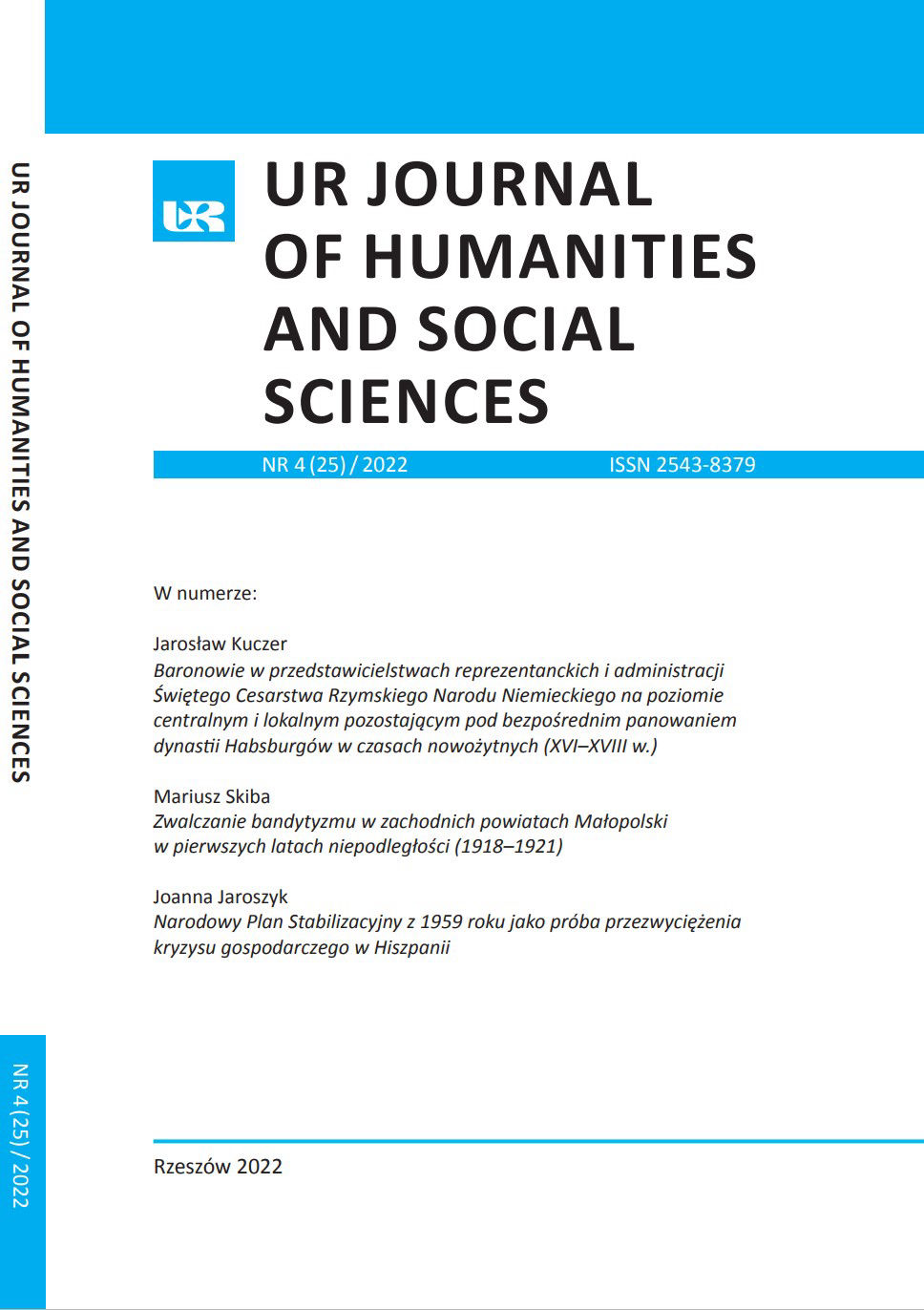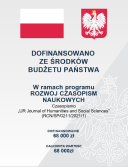Narodowy Plan Stabilizacyjny z 1959 roku jako próba przezwyciężenia kryzysu gospodarczego w Hiszpanii
DOI:
https://doi.org/10.15584/johass.2022.4.4Słowa kluczowe:
Narodowy Plan Stabilizacyjny gospodarka Hiszpanii, reformy gospodarcze, modernizacjaAbstrakt
Celem artykułu jest wskazanie przyczyn, uwarunkowań oraz skutków głębokiej reformy gospodarczej w Hiszpanii u schyłku lat 50. XX wieku wynikającej z Narodowego Planu Stabilizacyjnego, jego założeń gospodarczych, społecznych i politycznych. Wejście w życie wymuszonego dramatyczną sytuacją ekonomiczną kraju i przygotowanego pod presją Stanów Zjednoczonych oraz międzynarodowych instytucji finansowych Planu Stabilizacji oznaczało odrzucenie prowadzonej dotychczas przez reżim gen. Franco polityki autarkii gospodarczej i protekcjonizmu, przy równoczesnym otwarciu Hiszpanii na świat zewnętrzny, napływie kapitału zagranicznego, rozwoju sektora usług turystycznych oraz masowej emigracji zarobkowej obywateli tego kraju. Realizacja planu zakończyła się ekonomicznym sukcesem. W jego efekcie Hiszpania weszła na drogę szybkiego rozwoju gospodarczego, nastąpił wzrost płac realnych, a bezrobocie utrzymywało się na minimalnym poziomie. Sukces gospodarczy planu został również wykorzystany politycznie przez reżim Franco. Propagowana przez władze tzw. ideologia rozwoju miała odwrócić uwagę od wciąż niedemokratycznego systemu rządów, pozwalając reżimowi trwać w warunkach korzystnej koniunktury i rozwijającej się gospodarki.Downloads
Download data is not yet available.
Pobrania
Opublikowane
2022-12-15
Jak cytować
Jaroszyk, J. (2022). Narodowy Plan Stabilizacyjny z 1959 roku jako próba
przezwyciężenia kryzysu gospodarczego w Hiszpanii. UR Journal of Humanities and Social Sciences, 25(4), 72–85. https://doi.org/10.15584/johass.2022.4.4
Numer
Dział
Artykuły
Licencja
Prawa autorskie (c) 2022 Wydawnictwo Uniwersytetu Rzeszowskiego

Utwór dostępny jest na licencji Creative Commons Uznanie autorstwa – Użycie niekomercyjne 4.0 Międzynarodowe.



